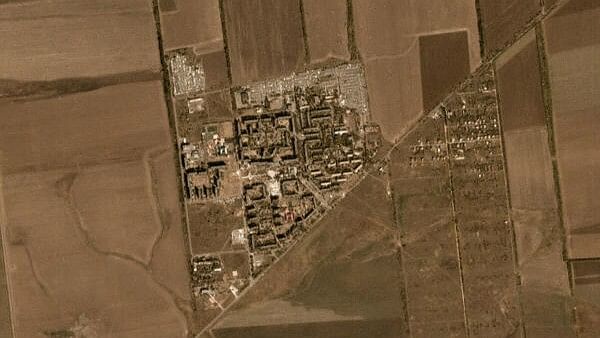
A satellite view of Vuhledar
Credit: Planet Labs Inc./via Reuters Photo
Russian troops are in complete control of the town of Vuhledar in Ukraine's eastern Donetsk region that has resisted Russian assaults for more than two years, the SHOT Telegram channel and pro-Russian war bloggers said on Wednesday.
Here are some key points about the town and the battle.
What is Vuhledar?
Vuhledar - which means "gift of coal" - is a coal mining town in eastern Ukraine's Donetsk region with a pre-war population of around 14,000 people, nearly all of whom have fled. It was built by the Soviet Union in the mid 1960s around a mine. There are two mines there now with significant coal reserves. Russians call the town, which sits on a flat plain and is comprised of high-rise apartment buildings and other structures, Ugledar.
Why did Russia want to take it?
Moscow says the Donetsk region is one of four Ukrainian regions it has annexed since 2022, a claim Kyiv rejects as illegal. Moscow saw taking control of Vuhledar as an important stepping stone to incorporating the entire region into Russia.
Control of the town - which Russians long regarded as one of Ukraine's toughest fortified positions to crack - is considered important by both sides because of its position on elevated ground and because it sits at the intersection of the eastern and southern battlefield fronts giving it added significance when it comes to supplying both sides' forces.
While Ukrainian forces were in full control of Vuhledar, they were able to use the town as a platform to shell Russian military supply lines in the area.
The town sits close to a railway line from Crimea, the Black Sea peninsula which Russia annexed from Ukraine in 2014, to Ukraine's industrialised Donbas region which comprises Donetsk and the eastern region of Luhansk, most of which Moscow controls. Taking Vuhledar, which Russia portrays as one of the last Ukrainian strongholds in southern Donetsk, opens the way for Russian forces to advance on other places.
How did Russia take control of Vuhledar?
Russian forces trapped Ukrainian soldiers in the town in what they called a mini-cauldron, gradually encircling it from all sides and thus making it increasingly difficult for Ukrainian forces to resupply or rotate in and out of the town. When such a cauldron closes, something Russian military bloggers say has already happened, there is no way in or out for the defenders who in this case were bombarded with devastating aerial glide bombs.
Russian forces had previously launched at least four major attempts to take Vuhledar, but had been repelled with Ukraine's 72nd Separate Mechanised Brigade mounting fierce resistance. Neither side discloses losses, but Ukrainian officials said Russian losses sustained during previous failed attempts to take the town had been significant. Moscow says Ukraine also paid a high human price when trying to retain Vuhledar.
What does Vuhledar look like now?
Fierce fighting since 2022 has left much of the town devastated. Images of Russian forces waving their flag on the roof of an administrative building on Tuesday in the centre showed a structure which had been reduced to rubble in parts and whose blackened windows had all been blown out.
Maksym Verbovsky, the town's deputy mayor, told Ukrainian state media last year that every single building had been damaged along with the entire infrastructure. He said then that fewer than 500 civilians, including three children and many pensioners, remained. All children and most adults have since been evacuated.